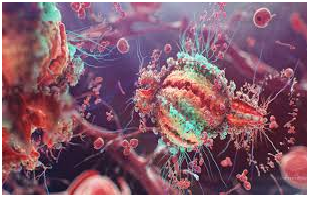Treatment Is Opened By Gene Manipulating Device By Temple Researchers

To years subsequent to turning into the world’s first research group to effectively expel HIV-1 from refined human safe cells, Temple University researchers have hit another critical point of reference in their progressing mission to add to a hereditary cure for the infection.
In a study distributed for the current week in Scientific Reports, analysts from Temple’s Lewis Katz School of Medicine show that they can now successfully and securely dispense with HIV-1 from the DNA of human T-cells utilizing a particular quality altering framework.
The study depended on an adjusted adaptation of the CRISPR/Cas9 genome altering apparatus, a flexible framework that offers the guarantee of dispensing with hereditary ailments and presenting new qualities in living beings. Before, Temple specialists had utilized the innovation to expel HIV-1 from ordinary human cells, yet their new discoveries demonstrate that they can utilize the same instrument to separate the infection from CD4+ T-cells, the white platelets that assault viral contaminations.
In a progression of investigations, Temple researchers developed T-cells utilizing blood drawn from patients living with HIV, then expelled the infection from those cell societies utilizing the quality altering innovation. By sending guide RNA over the T-cell genome looking for viral matches, the device could find HIV strands and permit the cells to repair themselves without the infection. The outcomes discovered empowering proof that this framework can be produced as a treatment technique both to evacuate the infection and shield cells from reinfection.
HIV has demonstrated impervious to cures in light of the fact that, as a retrovirus, it brings duplicating duplicates of itself into the genomes of its host cells. Antiretroviral medications can control the ailment in tainted patients, however keeping in mind the end goal to bolster the insusceptible framework and keep the onset of AIDs, they must be tackled a persistent premise.
The scientists at Temple could show not just that they can for all time dispose of the infection in gainfully tainted CD4+ T-cells, additionally that their strategy doesn’t seem to represent a danger of reactions or poisonous quality. In the wake of examining the treated cells, the analysts found no peril of transformations in qualities situated outside the focused on district
The discoveries are critical on numerous levels,” said Kamel Khalili, the study’s lead researcher and chief of Temple’s Center for Neurovirology and the Comprehensive Neuro AIDS Center. “They exhibit the adequacy of our quality altering framework in disposing of HIV from the DNA of CD4+ T-cells and, by bringing transformations into the viral genome, for all time inactivate viral replication. Further, they demonstrate that the framework can shield cells from reinfection and that the innovation is alright for the cells, with no poisonous impacts.”
While the exploration could in any case be years from delivering a reasonable HIV treatment, the powerful organization of CRISPR makes ready toward rat and human studies. It likewise raises trust in comparable genome-based medications for a scope of retroviruses that cause malignancy and leukemia.
“These examinations had not been performed already to this degree,” Khalili said. “However, the inquiries they address are basic, and the outcomes permit us to advance with this innovation.”
By : Natural Health News




